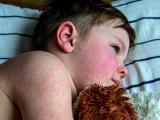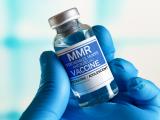Jul 14, 2011
UN: DRC cholera deaths approach 200
A cholera outbreak in the Democratic Republic of Congo (DRC) that since March has been spreading along the Congo River has now sickened more than 3,000 people and led to 192 deaths, the United Nations (UN) said in a press release yesterday. Of two affected provinces, the worst-hit area is Bandundu, though the disease is spreading quickly in the country's capital, Kinshasa. UN spokesman Martin Nesirky said the World Health Organization and its partners are helping the DRC's government set up hygiene campaigns, water chlorination points, and free treatment centers.
Jul 13 UN press release
Arizona health officials probe GBS, Campylobacter illnesses
Health officials in Yuma County, Ariz., along with their partners across the border in Mexico, have detected an increase in Campylobacter infections and cases of the rare Guillain-Barre syndrome (GBS). Officials from the US Centers for Disease Control and Prevention (CDC), the Arizona Department of Health Services, and Mexico's Sonora state are collaborating on an investigation into the source of the infections, Yuma County said in a press release yesterday. Campylobacter is a common cause of diarrheal illness and is typically spread through contaminated food or water. Immune reactions to recent illnesses or infections are thought to cause GBS, which can result in muscle weakness and paralysis. Becky Brooks, director of the Yuma County Health District, said officials started receiving reports of cases in June, the Yuma Sun reported yesterday. So far Yuma County has received reports of six confirmed GBS cases and one pending case. In a typical year the county sees three or four cases, she added. Mexican media sources say 15 GBS cases have been detected in San Luis Rio Colorado, the neighboring Sonoran community, according to the report. Brooks said investigators are tying to determine if the Campylobacter and GBS cases are related and what the food source could be.
Jul 13 Yuma County press release
Jul 13 Yuma Sun story
European measles cases push past 21,000
The number of measles cases so far this year in Europe has topped 21,000 cases, with most of the activity related to a large ongoing outbreak in France, the European Centre for Disease Prevention and Control (ECDC) reported yesterday. Six deaths have been reported, all in France. The ECDC said that since its last update in May a new outbreak has been reported in the autonomous province of Bolzano, Italy, involving more than 600 cases. Italian health officials told the ECDC that the area has Italy's lowest measles vaccination rate, with strong opposition to vaccines. Countries reporting a considerable increase in measles cases this year compared with 2010 include Romania, Switzerland, Spain, Belgium, Denmark, the United Kingdom, and Italy. Most of the infections are occurring in unvaccinated or incompletely vaccinated people, according to the report.
Jul 13 ECDC measles update
In a Eurosurveillance editorial today the ECDC said it was "astonishing" to see the EU export measles to the rest of the world, a phenomenon that undermines years of disease-elimination efforts. However, it said that conditions are still favorable to eradicate the disease. It said the EU needs to contain the disease within its own borders first, and that intensified efforts are needed to build public awareness, especially over the summer when mass gatherings and travel are common.
Jul 14 Eurosurveillance editorial
CDC reports dengue infections in Haiti missionaries
The CDC today reported on a cluster of dengue infections in a missionary group that returned from serving in Haiti in October 2010. The cases came to light when a Nebraska clinician reported six dengue-like illnesses to state health officials. The findings from the investigation appeared today in Morbidity and Mortality Weekly Report (MMWR). The workers were from Nebraska and Georgia. All 28 of the group members took a survey on dengue exposure and knowledge, and 21 of them underwent full dengue testing. Infections were detected in 7 of the 21. Though nearly all had sought pretravel medical advice, only 48% said they knew about the risk of dengue and how to prevent it. Only 29% recalled having a mosquito bite. The CDC said the episode shows the value of prompt reporting of suspected cases, and it urged travelers to seek information about dengue risks and clinicians to have a high degree of suspicion for the disease among febrile travelers returning from Haiti and other areas where the disease is endemic.
Jul 14 MMWR study
Report offers details on novel adenovirus in monkeys, humans
A report published today in PLoS Pathogens offers new details on a novel adenovirus that killed monkeys in a California research center and infected a worker there. The virus, named titi monkey adenovirus (TMAdV), is said to be the first adenovirus known to achieve cross-species transmission. It was first reported at a conference in October 2010. The virus caused pneumonia and hepatitis in 23 of 65 titi monkeys at the California National Primate Research Center in Davis, killing 19 of them. A researcher who worked with the monkeys also experienced a 4-week respiratory illness and tested positive for the virus, as did one of her family members. Genome sequencing revealed that the virus is new and less than 57% identical to other adenoviruses. Screening of 81 randomly chosen blood donors from the western United States showed that two had antibodies to TMAdV. The high case-fatality rate in the outbreak suggests that titi monkeys are not the virus's natural reservoir, which remains unknown, the report says. The authors say the findings suggest that "adenoviruses should be monitored closely as potential causes of cross-species outbreaks."
Jul 14 PLoS Pathog report
Oct 25, 2010, CIDRAP News item on the virus
Inovio's H5N1 vaccine shows promise in early trial
Inovio Pharmaceuticals, of Blue Bell, Pa., today announced that a phase 1 trial of its first DNA H5N1 influenza vaccine showed a significant antibody response to the strain and was safe and well tolerated at all doses. The company said in a press release that the vaccine, SynCon H5N1, uses electroporation technology, which employs short, localized electrical pulses to enhance uptake and effectiveness. Study subjects included 60 healthy volunteers from the United States and South Korea. The vaccine produced a strong antibody response in 96% and significant T-cell responses in 72% of subjects. No serious adverse events were reported, and the mild-to-moderate injection site reactions that occurred needed no treatment. Inovio said the findings prompted a second phase 1 trial to assess a version that includes both H1N1 and H5N1 subtypes. It said the studies are part of a program to produce a universal influenza vaccine.
Jul 14 Inovio press release



















